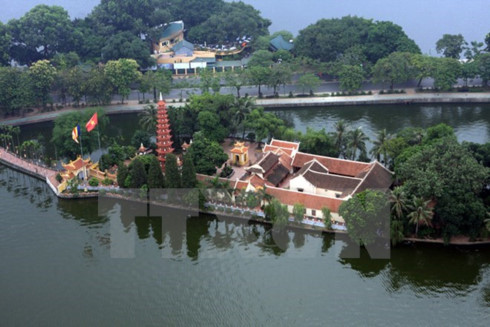
The second "Green Heritage" Culture and Tourism Week will take place in Hanoi from November 21-23 as one of activities celebrating Vietnam’s Culture Heritage Day, the Ministry of Culture, Sports and Tourism announced on October 26.
The event, themed
"Meeting of humans and nature," is expected to draw the participation
of various localities nationwide, aiming to promote and honour cultural and
natural heritage sites, especially those recognised by UNESCO as world natural
heritage sites.
This is also a chance for the participating provinces and cities to introduce
and promote their cultural, tourism and trade potentials, as well as the
attraction of eco-tourism in the world’s natural heritage sites, while sharing
experiences in preserving natural heritage values.
A range of artistic and cultural activities will be held during the week
including traditional Ca Tru (ceremonial singing), folk songs, Don Ca Tai
Tu (southern amateur singing), and Chau Van (spiritual singing). In addition, a
cultural exchange programme for students and a painting festival for kids will
be also organised.
According to the Ministry of Culture, Sports, and Tourism, the event is a
social activity, creating a chance for Vietnamese people, especially the youth,
to show their responsibility, patriotism and pride to natural heritage sites.
It will also raise public awareness of preserving biodiversity and natural
environment, and preventing impacts of climate change.
On this occasion, the ministry will also host a week of "Great solidarity
of ethnic groups - Vietnam's cultural heritage" from November 18-23 at the
Vietnam Cultural and Tourism Village in Hanoi's outlying Ba Vi district.
The Green Heritage Culture and Tourism Week was first launched in 2013.
Source:
VOV
The People’s Committee of Lac Son district held a ceremony on April 28 to receive the provincial relic certificate for the ancient rock carving site at Suoi Co stream, located in My Thanh commune.
A special music show titled "The country is in the fullness of joy” has been held at Hoa Binh Square in Hoa Binh city in celebration of the 50th anniversary of the liberation of the South and national reunification (April 30, 1975–2025).
The People's Committee of Lo Son commune, Tan Lac district, has organised the local annual traditional stream fishing festival on April 19 - 20.
As a land deeply intertwined with human history and Vietnam’s millennia-long journey of nation-building and defence, Hoa Binh is often revered for its epic tales and legends.
Residents of Hoa Binh boast a rich cultural identity, reflected in their unique language, traditional attire, customs, and folk melodies – described as "sweet as honey, clear as a mountain stream.”
Lac Son district’s Vu ban town held the 2025 Truong Kha temple festival on April 12–13 (the 15th–16th days of the third lunar month). Since its revival in 2019, the festival has been organised every three years, preserving valuable intangible heritage while meeting the community’s cultural and spiritual needs.



